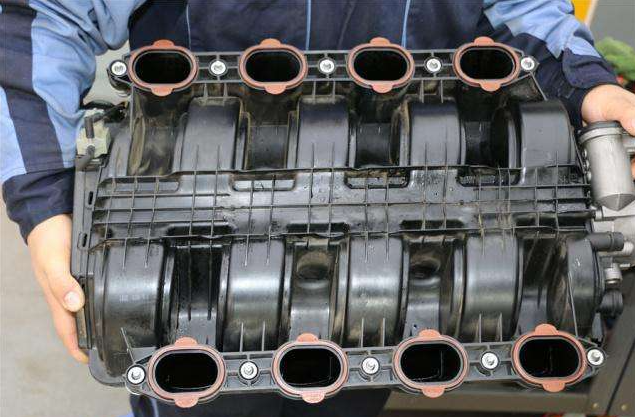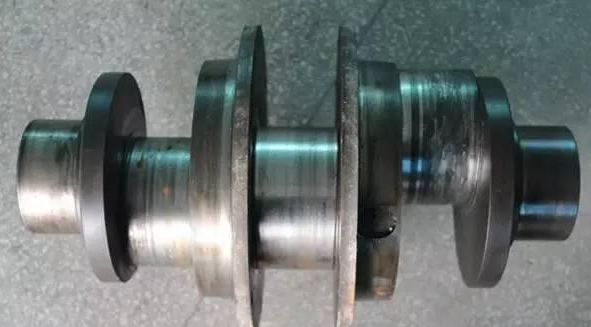The lifespan of a crankshaft can vary greatly, but with proper care and regular maintenance, it can typically last between 200,000 to 300,000 miles.
Introduction
Overview of the Crankshaft
The crankshaft is an essential component of an internal combustion engine. It converts the linear motion of the pistons into rotational motion, which drives the vehicle’s wheels. The crankshaft is designed to endure incredible stress and high operating temperatures, making it one of the most durable parts in an engine.
Role of a Crankshaft in a Vehicle
In a vehicle, the crankshaft plays a vital role in the engine’s function. By converting piston movement into rotation, the crankshaft is the primary source of power for driving the vehicle. It interacts directly with several other components such as the connecting rods, pistons, and flywheel, making it a key component in the overall operation and performance of the engine.

Understanding the Lifespan of a Crankshaft
Factors Affecting the Lifespan
Various factors can affect the lifespan of a crankshaft. These include the quality of maintenance, driving habits, engine load, and operating conditions. For instance, engines frequently subjected to high loads or extreme operating conditions are likely to experience more rapid wear on their crankshafts.
Average Lifespan of a Crankshaft
On average, a well-maintained crankshaft can last anywhere between 100,000 to 200,000 miles. However, this can vary greatly depending on the factors mentioned above. Some high-quality crankshafts have been known to last for the entire life of the vehicle.
Causes of Crankshaft Damage
Poor Maintenance
Lack of proper maintenance can significantly shorten the lifespan of a crankshaft. Regular oil changes are crucial, as oil lubricates the crankshaft, reducing friction and heat. Without adequate lubrication, the crankshaft is subject to increased wear and tear.

Overheating
Overheating is another common cause of crankshaft damage. Overheating can occur due to low coolant levels, blocked radiators, or a faulty thermostat. Prolonged overheating can warp or crack the crankshaft, severely impacting its performance.
Manufacturing Defects
While less common, manufacturing defects can also cause crankshaft damage. A crankshaft may be improperly balanced or contain weak points that make it more susceptible to failure.
Signs of a Worn or Damaged Crankshaft
Engine Vibration
One of the first signs of a worn or damaged crankshaft is unusual engine vibration. This is often due to an imbalance in the crankshaft or damage to one of its main bearings.
Oil Leaks
Oil leaks around the engine are another common sign of crankshaft problems. If the crankshaft seal is worn or damaged, it can allow oil to leak from the engine.
Unusual Noises
Unusual noises such as knocking, rattling, or ticking can also indicate a problem with the crankshaft. These noises are often due to worn or damaged bearings, which can allow the crankshaft to move irregularly.
Maintaining the Health of a Crankshaft
Routine Inspections
Regular inspections are an essential part of maintaining the health of a crankshaft. By regularly examining the crankshaft and surrounding components for signs of wear or damage, potential issues can be identified and addressed before they lead to significant problems. This might include checking for cracks, measuring for wear, and testing for balance.
Regular Oil Changes
One of the most important factors in maintaining a healthy crankshaft is regular oil changes. The engine oil lubricates the crankshaft, reducing friction and minimizing wear. Over time, oil breaks down and becomes less effective at lubricating, leading to increased wear on the crankshaft. Regular oil changes ensure that the crankshaft is always adequately lubricated.
Appropriate Driving Behaviors
The way a vehicle is driven can significantly impact the lifespan of its crankshaft. Driving at consistent speeds, avoiding rapid acceleration and deceleration, and not overloading the vehicle can all help to prolong the life of the crankshaft.
Repair vs Replacement: Making the Decision
Factors to Consider
When a crankshaft becomes damaged, it’s important to consider several factors before deciding whether to repair or replace it. This can include the extent of the damage, the cost of repair vs replacement, and the expected lifespan of the repair compared to a new crankshaft.
| Factor | Repair | Replacement |
|---|---|---|
| Cost | Varies | Often higher |
| Time Required | Usually less | Usually more |
| Longevity | Could be less | Usually longer |
Cost-Benefit Analysis
A cost-benefit analysis can help in making this decision. This involves weighing the cost of repairing the crankshaft against the cost of replacing it, considering both the direct costs and the potential future costs of further repairs.
Case Study: Lifespan of a Crankshaft in Different Vehicles
This section could present a comparison of crankshaft lifespans in various types of vehicles, such as sedans, trucks, and sports cars. It would provide an in-depth look at how different factors can impact the lifespan of a crankshaft in real-world scenarios.
Conclusion
Summary of Key Points
In conclusion, the lifespan of a crankshaft can vary greatly depending on several factors, including maintenance practices, driving habits, and the operating conditions of the engine. Regular inspections, oil changes, and careful driving can all help to prolong the life of a crankshaft.
References
This section would list all the sources used in the article. The list should follow an appropriate citation format and provide links where possible. Proper citation ensures the credibility and reliability of the information presented in the article.
A crankshaft is a critical component of the engine that converts reciprocating linear piston motion into rotation. It’s durability and lifespan are vital for the longevity of the engine itself. Typically, a crankshaft can last between 200,000 to 300,000 miles with proper care and regular maintenance. Let’s delve into more details about the crankshaft, its importance, longevity factors, and how to extend its life. Crankshaft – Wikipedia
Understanding the Crankshaft
The crankshaft serves as the backbone of the engine. It’s responsible for converting the linear motion of the pistons into rotational motion, which ultimately drives the wheels of a vehicle.
Crankshaft Materials and Design
The durability and life expectancy of a crankshaft largely depend on its construction materials and design. Generally, crankshafts are made from a variety of materials, including cast iron, forged steel, and composites.

Factors Affecting Crankshaft Longevity
Several factors play a role in determining the lifespan of a crankshaft. These include the quality of the material, operating conditions, and how well the crankshaft and the engine are maintained.
Maintenance is Key
Regular maintenance is crucial for extending the lifespan of a crankshaft. This includes timely oil changes, using the correct grade of engine oil, and ensuring the engine is in good condition.
Signs of a Failing Crankshaft
Recognizing the symptoms of a failing crankshaft can help prevent major engine damage. Some common signs include excessive vibrations, oil leaks, engine misfires, and metallic noises coming from the engine.
Extending the Life of a Crankshaft
There are ways to prolong the life of a crankshaft. Ensuring good lubrication, regular inspections, and immediate repairs of any issues can significantly improve the lifespan of a crankshaft.
In summary, a crankshaft is a critical engine component, and its lifespan depends on several factors, primarily regular maintenance. With proper care, a crankshaft can last a considerable amount of time, contributing to the overall longevity of the engine.